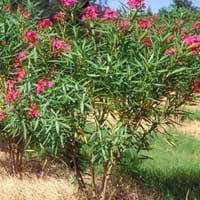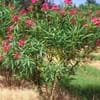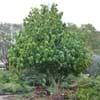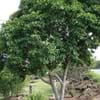Life Span
Perennial
Perennial
Type
Flowering Plants, Shrub
Perennial
Origin
Southwest Asia
California
Types
Calypso, Petite Salmon, Petite Pink
Not Available
Habitat
dry rocky watercourses, Riverbanks
Chaparral, River side
USDA Hardiness Zone
9-11
7-10
AHS Heat Zone
Not Available
9-1
Sunset Zone
Not Available
H1, 4, 5, 6, 7, 8, 9, 10, 11, 12, 14, 15, 16, 17, 18, 19, 20, 21, 22, 23, 24
Habit
Bushy, Evergreen
Upright/Erect
Minimum Width
Not Available
Flower Color
Cream, Creamy Yellow, Pink, Purple, Red, White
White, Yellow
Flower Color Modifier
Bicolor
Bicolor
Fruit Color
Non Fruiting Plant
Green, Tan
Leaf Color in Spring
Dark Green
Gray Green
Leaf Color in Summer
Dark Green
Gray Green
Leaf Color in Fall
Dark Green
Gray Green
Leaf Color in Winter
Gray Green
Light Green
Leaf Shape
Long linear and narrow
Lance shaped
Plant Season
Fall, Spring
Spring, Summer
Sunlight
Full Sun, Partial shade
Full Sun
Type of Soil
Marshy ground, Well drained
Loam, Sand
The pH of Soil
Neutral, Slightly Alkaline
Neutral, Alkaline
Soil Drainage
Well drained
Well drained
Bloom Time
Summer
Early Spring, Spring, Late Spring, Early Summer, Summer
Tolerances
Drought
Drought
Where to Plant?
Ground, Pot
Ground
How to Plant?
Layering, Seedlings, Stem Planting
Cuttings, Seedlings
Plant Maintenance
Low
Medium
Watering Requirements
Water less during winter, Water more in summer
Needs watering once a week, Water well when planted
In Summer
Lots of watering
Lots of watering
In Spring
Moderate
Moderate
In Winter
Average Water
Average Water
Soil pH
Neutral, Slightly Alkaline
Neutral, Alkaline
Soil Type
Marshy ground, Well drained
Loam, Sand
Soil Drainage Capacity
Well drained
Well drained
Sun Exposure
Full Sun, Partial shade
Full Sun
Pruning
Prune in the late winter or spring, Remove shoots
prune nearly to the ground in late fall
Fertilizers
All-Purpose Liquid Fertilizer, fertilize every 2-3 weeks while growing, Fertilize in early spring, Potassium
organic fertlizers
Pests and Diseases
Leaf spot, Mealybugs, Red blotch, Red spider mite, Scale, Scale insects
Verticillium Wilt
Plant Tolerance
Drought
Drought
Flower Petal Number
Single
Single
Showy Foliage
Unknown
Not Available
Foliage Texture
Medium
Not Available
Foliage Sheen
Matte
Not Available
Attracts
Mealybugs, Not Available
Bees, Birds, Butterflies
Allergy
Phytodermatitis, Rash, Toxic
no allergic reactions
Aesthetic Uses
Cottage Garden, Showy Purposes, Used in parkland
Showy Purposes
Beauty Benefits
Not Available
Not Available
Environmental Uses
Air purification
Air purification
Medicinal Uses
Asthma, Cancer, Cardiotonic, Diabetes, epilepsy, Scabies
antimicrobial, Astringent, Gum Problems, Stomach pain
Part of Plant Used
Flowers, Leaves
Flower Stalk
Other Uses
Used as Ornamental plant
Used as Ornamental plant
Used As Indoor Plant
No
No
Used As Outdoor Plant
Yes
Yes
Garden Design
Not Available
Feature Plant, Groundcover, Mixed Border, Wildflower
Botanical Name
Nerium
ROMNEYA coulteri
Common Name
Oleander, Nerium Oleander
Matilija Poppy
In Hindi
ओलियंडर
Matilija Poppy
In German
Oleander
Matilija Poppy
In French
laurier-rose
Matilija Poppy
In Spanish
Adelfa
Matilija amapola
In Greek
Πικροδάφνη
Matilija παπαρούνας
In Portuguese
oleandro
Matilija Poppy
In Polish
Oleander
Matilija Poppy
In Latin
Cleander
Matilija Poppy
Phylum
Magnoliophyta
Magnoliophyta
Class
Magnoliopsida
Magnoliopsida
Order
Gentianales
Papaverales
Family
Apocynaceae
Papaveraceae
Clade
Angiosperms, Asterids, Eudicots
Angiosperms, Eudicots
Tribe
Wrightieae
Not Available
Subfamily
Apocynoideae, Hippocastanoideae
Papaveroideae
Number of Species
Not Available
Properties of Oleander and Matilija Poppy
Wondering what are the properties of Oleander and Matilija Poppy? We provide you with everything About Oleander and Matilija Poppy. Oleander doesn't have thorns and Matilija Poppy doesn't have thorns. Also Oleander does not have fragrant flowers. Oleander has allergic reactions like Phytodermatitis, Rash and Toxic and Matilija Poppy has allergic reactions like Phytodermatitis, Rash and Toxic. Compare all the properties and characteristics of these two plants. Find out which of these plant can be used as indoor plant. If you are interested to decorate your house and garden, find out aesthetic uses, compare them and select the plant which will beautify your surrounding. Along with beautification, try comparing medicinal and edible uses of Oleander and Matilija Poppy and you can choose the plant having best and most benefits.
Season and Care of Oleander and Matilija Poppy
Season and care of Oleander and Matilija Poppy is important to know. While considering everything about Oleander and Matilija Poppy Care, growing season is an essential factor. Oleander season is Fall and Spring and Matilija Poppy season is Fall and Spring. The type of soil for Oleander is Marshy ground, Well drained and for Matilija Poppy is Loam, Sand while the PH of soil for Oleander is Neutral, Slightly Alkaline and for Matilija Poppy is Neutral, Alkaline.
Oleander and Matilija Poppy Physical Information
Oleander and Matilija Poppy physical information is very important for comparison. Oleander height is 300.00 cm and width 350.00 cm whereas Matilija Poppy height is 120.00 cm and width Not Available. The color specification of Oleander and Matilija Poppy are as follows:
Oleander flower color: Cream, Creamy Yellow, Pink, Purple, Red and White
Oleander leaf color: Dark Green
Matilija Poppy flower color: White and Yellow
- Matilija Poppy leaf color: Gray Green
Care of Oleander and Matilija Poppy
Care of Oleander and Matilija Poppy include pruning, fertilizers, watering etc. Oleander pruning is done Prune in the late winter or spring and Remove shoots and Matilija Poppy pruning is done prune nearly to the ground in late fall. In summer Oleander needs Lots of watering and in winter, it needs Average Water. Whereas, in summer Matilija Poppy needs Lots of watering and in winter, it needs Average Water.





